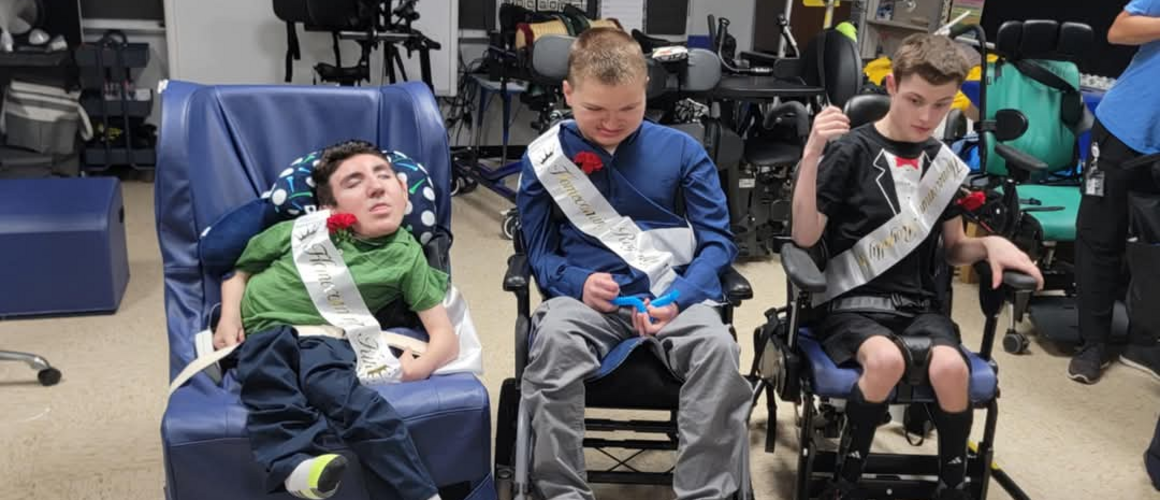Our History
The Special Education Association of Peoria County (SEAPCO) is organized under an original governing policy that was implemented on July 1, 1965. Although the agreement has been amended on four occasions to conform to changes in operations or in state law, the original intent has been maintained:
“The purpose of the said Association shall be to establish and operate services and programs for students with disabilities between the ages of three and twenty-one for whom it is determined through procedures described in The School Code of Illinois, that special education services are needed.”
Membership in SEAPCO includes all of the public school districts within Peoria County, except for the city of Peoria (Peoria Public School District #150) and Dunlap School District #323. In 1965, the original members established a governing board to handle operations and hired its first director, Jerome A. Jendras; he served from 1965 to 1974. Barbara Suelter, was hired as the next director and served from 1974 to 1990. In 1990, Jane Winter Clark was hired to succeed Dr. Suelter and served from 1990 to 2010. In 2010, Susanne Carrescia was hired as the special education director to serve upon Mrs. Clark’s retirement from the educational field and served from 2010 to 2017. Following Susanne Carrescia, Dr. Lora Haas served as director from 2017 to 2023. Kerry Klesath is the current director beginning July 1, 2023.
SEAPCO was functioning as a cooperative agreement as early as July 1, 1965. Amendments were approved on March 27, 1968; March 12, 1970; May 21, 1983; and on March 12, 2010. On September 6, 1974, SEAPCO was incorporated under the General Not-For-Profit Corporation Act so that Social Security and IMRF taxes could be paid. On May 1, 1974, SEAPCO received its "Certificate Waiving Exemption from Taxes" and its Federal Employee Identification Number (FEIN).
Changes to the Governing Policies have been achieved by approval of amendments. Early changes (1970 amendment) included removing sections that refer to the process of student placement, the delivery of special education services, and the provision of transportation.
Through the amendments, major changes have been made to the Association's organizational structure, duties and powers, and employment of personnel over the years. In the 1968 amendment, representation for member districts occurred through a Governing or General Assembly. Each of the thirty-four member districts had one representative with weighted voting based on the Fall Housing Report with the County Superintendent as an ex-officio member with no vote. The General Assembly (made up of all member districts) met annually.
Powers and duties of the Assembly included electing the Directing Council; appointing the Administrative District; approving the budget and amendments; and advising the Directing Council on operation and development of program services.
The Directing Council consisted of nine elected members who served three-year terms. Each member had one vote. The County Superintendent and the Director were ex-officio members. The Superintendent served as chairperson and cast the deciding vote in case of a tie. The Council met monthly to develop policies and procedures. The Council also selected the Director.
In the 1970 amendment, the Governing Assembly and Directing Council were replaced by the Directing Council. Over the years, the number of member districts had been greatly reduced from thirty-six to sixteen through consolidation of school districts in the county. Each of the sixteen member districts had one representative, either the superintendent or an appointed representative. The County Superintendent was the chairperson, and ex-officio member who cast the deciding vote in case of ties. The Director was an ex-officio member without a vote. Voting was weighed in the same manner as found in the former General Assembly. The Council continued to meet monthly. Powers and duties included making recommendations to the Regional Superintendent relative to the development of policies and procedures and to selection of the Director.
In 1983, the Board of Control replaced the Directing Council. This structure continues to the present time. Each member and the Regional Superintendent were entitled to one representative. Weighted voting is now based on the number of special education students served by SEAPCO programs as reported on the October tuition billing. The Regional Superintendent is given the same number of votes as the district with the least number of votes. The chairperson, vice-chairperson, and secretary were then elected annually from the membership.
In the mid-1990’s, the Board of Control established a rotating system for the chairperson and the vice-chairperson, who now serve two-year terms. The Board’s secretary is still elected annually. The Director remains an ex-officio member without a vote. The Board meets monthly to set policies; approve an annual budget and pay bills; provide direction for the cooperative; and to direct the employment, evaluation, and termination of all SEAPCO employees. The Director reports to the board.
Until 1983, employees were hired by the Administrative District (the Regional Office of Education); contracts were issued by the ROE upon approval by the Directing Council. Salaries were established by the Directing Council. Under the current governing policies, the Board of Control employs or dismisses personnel based on recommendations from the Director. The Director defines employee's responsibilities with salaries established by the Board through negotiations with the SEAPCO Education Association, a member of the Illinois Education Association.
In the mid-1990’s, another major change occurred under Budget and Finance. Until 1983, the Administrative District (the ESR) and the Director prepared the budget with recommendations for the Directing Council. Now, the Director prepares the budget. Also the Association now employs a treasurer.
Finally, in 2010, the agreement was modified once again to incorporate new legislative language relative to member rights to voluntary withdrawal from the cooperative, the dissolution of the cooperative, the distribution of assets upon dissolution, and the establishment of an advisory committee and liaison between the director and the Board of Control. Other documents available to the interested reader include the following:
- Two early roll call sheets from March 1968, listing thirty-six member districts; and July 1 1968, listing thirty-four member districts.
- The amended governing agreement from March 27, 1968.
- An early salary schedule from 1966-1967.










